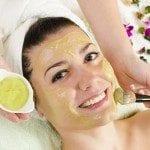To Schedule Appointments: 309-360-9035
Other Inquiries: 309-360-8077

Rosacea is a chronic condition of the skin that involves inflammation. It shows up as flushed skin, redness, broken capillaries and/or breakouts. It is typically on the cheeks, nose, chin and forehead.
There are no conclusive findings as to the cause, but there are many theories, including vascular dysfunction, impaired barrier function, hormonal dysfunction, and an increase in demodex mites that are thought to create inflammation.
There are certain environmental and lifestyle triggers that will cause the skin to become more irritated, red and inflamed. This is a list of some of the most common triggers. It is not all-inclusive, as everyone’s skin is different. It is helpful to keep a journal of food, lifestyle, sleep, etc. so that individual triggers can be identified and eliminated or minimized.
While there is no cure for rosacea, there are many treatments available to control the appearance.

For severe cases, such as phymatous rosacea or ocular rosacea a Dermatologist or Plastic Surgeon should be seen. They can recommend oral and topical medications and laser and surgical procedures that will be beneficial for those suffering from severe cases of rosacea.
For mild to moderate cases, a Licensed Esthetician can help. There are many different treatments that will help calm the skin and reduce inflammation, along with clearing up papules and pustules that go along with some forms of rosacea. A soothing treatment, followed by red LED can improve the appearance substantially. In any skin treatment, you absolutely want to avoid steam or hot towels. Home care products are also available to help lessen the symptoms, but it is a good idea to get professional advice on this, as there are many skin care ingredients that will actually worsen the appearance of the skin.
Sorry, comments are closed for this post.